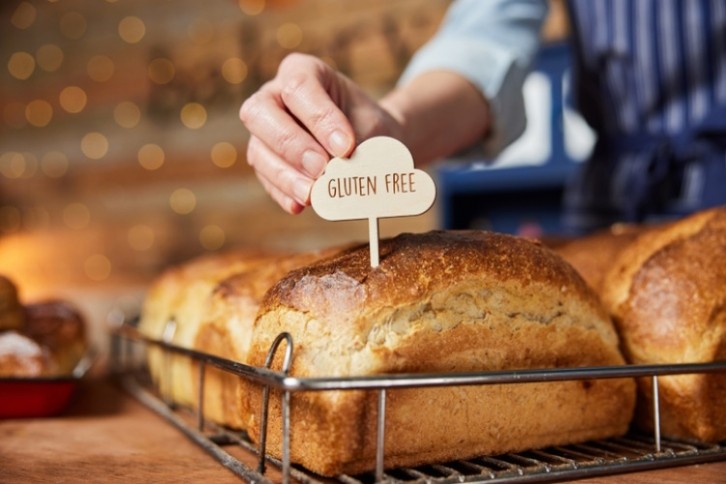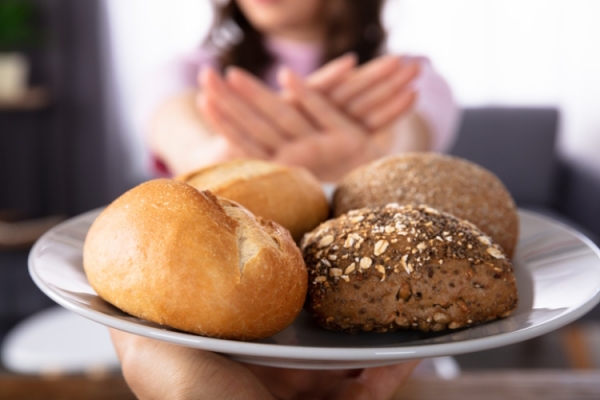Is gluten-free still trending? Grupo Bimbo certainly thinks so

Grupo Bimbo has ramped up its presence in the gluten-free space with a new acquisition.
“I would like to share with you that we successfully completed the acquisition of Amaritta Food in Spain, a company that specializes in research and development for gluten-free bread,” Bimbo chairman and CEO Daniel Servitje announced in a conference call with analysts during the company’s fourth-quarter financial results.
“This acquisition will enable us to continue gaining know-how in this category and lever from this technology and capitalize it in growth of that high-growth potential in that market.”
It’s not the first time the Mexican bakery giant has made inroads into the space.
Back in 2013, Bakery&Snacks reported it had developed a branded line of GF breads, which a Euromonitor International analyst at the time predicted would give the company a strong foothold in the new arena. A spokesperson for Bimbo said the company had actually been testing the products in specific US market since mid-2012s.
In 2020, Bimbo-owned New York Bakery Co launched two gluten-free bagels for foodservice.
In 2021, its venture capital arm made a minority investment in Rule Breaker Snacks, a maker of vegan, gluten-free and allergy-friendly snacks.
A similar investment was made the same year in Ecuador’s LiveKuna, a vertically integrated supplier of natural products including gluten-free flours, pasta, cereal, seeds and grains.
It also acquire Emmy’s Organics, producer of ultra-premium organic cookies that also come in gluten-free variants.
In July 2023, the Mexican conglomerate announced a partnership with Zero Carb Co, a joint venture startup of Dutch baking company Bakker Wiltink and venture builder BOX NV that focuses on the gluten-free zero-carb bread market.
And so the list goes on.
The growth of GF
Not so long ago, if you mentioned you followed a gluten-free (GF) diet, you were likely to be greeted with an sympathetic or blank stare. The average person who didn’t suffer from a gluten intolerance had barely heard of the protein, while those who did were faced with sad-looking products that were equally gloomy in the taste and texture departments.
Gluten is the main storage protein in wheat grains (similar storage proteins include secalin in rye and hordein in barley). The chemical structure of gluten gives doughs an elastic texture and allows it to rise during baking. Moreover, it’s used as a stabilizing agent and flavor enhancer in many food products, including some that do not contain grains, such as ice cream and cooking sauces.
While beneficial in many ways, gluten has also been associated with inflammatory reactions in the gastrointestinal tract, ranging from bloating to diarrhoea, depression, brain fog and even pain.
It was around 2010 that interest started to increase rapidly and the specialised diet skipped from fad to fashionable to mainstream in a heartbeat.
It’s impossible to pin down the precise moment of genesis, but a few factors converged to produce the perfect storm.
“The gluten-free diet is a medical diet that’s being adopted by people who don’t really need it,” said Kristina Arslain, who was part of a team from the University of Nebraska-Lincoln to investigate why gluten-free had become so popular. She authored the paper – published in Appetite in 2021 – as part of her master’s thesis with the Department of Food Science and Technology.
“Why is it so popular? We found there’s a lot of misinformation and misinterpretation about gluten-free diets.”
Food allergies were on the rise in the Western world, whether real or perceived. Supporting this is a 2019 study – which polled more than 40,000 people in the US – that found around one in 10 people had a food allergy. One in five, on the other hand, believed they had a food allergy.
A 2023 study found 70% of the women respondents had voluntarily tried the GF diet without a confirmed medical diagnosis, despite the higher costs.
The lifestyle was fast receiving high profile endorsement from celebs like Lady Gaga, New Orleans Saints quarterback Drew Brees, broadcaster Keith Olbermann and former presidential daughter Chelsea Clinton.
It was considered an effective method to lose weight and clear up acne, although the ability of the GF diet to deliver these health benefits has not been substantiated by scientific studies for people who are not gluten sensitive.
“One of the implications of going gluten-free is that you are probably going to end up with a diet that is less rich in whole grains,” said Prof Christopher Gustafson, associate professor at the University of Nebraska-Lincoln who studies behavioral economics.
“There’s real public health and personal health reasons to be concerned about people voluntarily choosing the gluten-free diet when they don’t have a diagnosed reason to do so.”
Those who follow the GF diet believe gluten should be limited, much like salt, sugar or fat, rather than as an allergen that must be completely avoided.
Positive beliefs about the health benefits of the GF diet are widely held. A 2016 survey by Statista of over 2,000 US residents found 64% considered GF products to be either ‘very healthy’ or ‘somewhat healthy’.
The truth is though, GF products typically contain more calories, fat and sodium than their conventional counterparts. They’re also lower in nutrients like vitamin B12, folate, niacin, vitamin D, iron, zinc, magnesium and calcium.
“Diagnosed cases of gluten sensitivity are on the rise, but whether gluten sensitivity is actually increasing is not established,” said Devin Rose, associate professor of food science and technology at the University of Nebraska-Lincoln, adding scientists disagree whether its food processing or wheat breading that is contributing to gluten sensitivity.
“It could be that since gluten issues have become a hot topic, we start looking for it more and therefore we find it more. It also may be that our methods and ways of detecting gluten sensitivity have improved.”
Whatever the reason behind the adoption of the GF diet, industry has certainly stepped up and improved variety and quality in recent years.
Grupo Bimbo eyes the GF bread market
Flowers Foods is currently the largest player in the GF bread market in the US, following its 2018 acquisition of Canyon Bakehouse.
Bimbo, however, has been steadily building its presence in this niche and the acquisition of Amaritta Food SL could very well be the gamechanger.
Amaritta was established in 2020 by visionary Maria Carmona Bejar and quickly became a key player in this space. Today it operates a 21,530-square-foot production plant in Córdoba, which has the capacity to produce 10 million units of GF product while avoiding 13 of the 14 declared allergens.
This acquisition not only enriches Bimbo’s portfolio and footprint in the GF market but marks a significant leap towards catering to a growing demographic of health-conscious consumers.
Meanwhile, Servitje told analysts commodity price pressures are starting to abate but the company expects to see ‘tailwinds’.
“While we continue to see the benefit of lower commodities, this year will be marked by a transitional phase as we navigate through a diverse consumer environment, witnessing a blend of cautiousness in certain markets and resilience in some others,” he said.
“Emphasising the significance and importance of diversification, our company is strategically positioned to navigate this environment.
For the FY23, the Mexico-headquartered company reported $22.5b in net sales and $3.1b in adjusted EBITDA for 2023. Six acquisitions were completed, and $1.8b was issued, including a sustainability-linked bond.
Both sales and adjusted EBITDA are forecast to increase in the low-to-mid-single digit range in 2024.
“We will see some tailwinds this year coming from commodity prices, coupled with productivity benefits from past restructuring and capital investments,” added CFO Diego Gaxiola said.
Servitje hinted at more ‘optimization’ in 2024.
“A key focus will be on restructuring investments in countries such as the US, in line with our proactive approach to identifying opportunities that resonate with our philosophy and strategy to be a sustainable, highly productive company.
“We are always actively evaluating and terminating the best-in-world practices and we have a footprint in the US that is a lot of local bakeries and a lot of acquisitions. So we’ll continue to look at specific opportunities that we have to optimise our footprint.”
Studies:
Gupta RS, Warren CM, et al, Prevalence and Severity of Food Allergies Among US Adults. JAMA Netw Open. 2019;2(1):e185630. doi:10.1001/jamanetworkopen.2018.5630
Arslain K, Gustafson CR, et al, Determinants of gluten-free diet adoption among individuals without celiac disease or non-celiac gluten sensitivity. Appetite, Volume 156, 2021, 104958. doi.org/10.1016/j.appet.2020.104958.
Fatima M. Alkhalifa FM, Abu Deeb FA, et al, Knowledge of and behaviors toward a gluten-free diet among women at a health sciences university. J Taibah Univ Med Sci. 2023 Dec; 18(6): 1567-1576. doi: 10.1016/j.jtumed.2023.07.012






